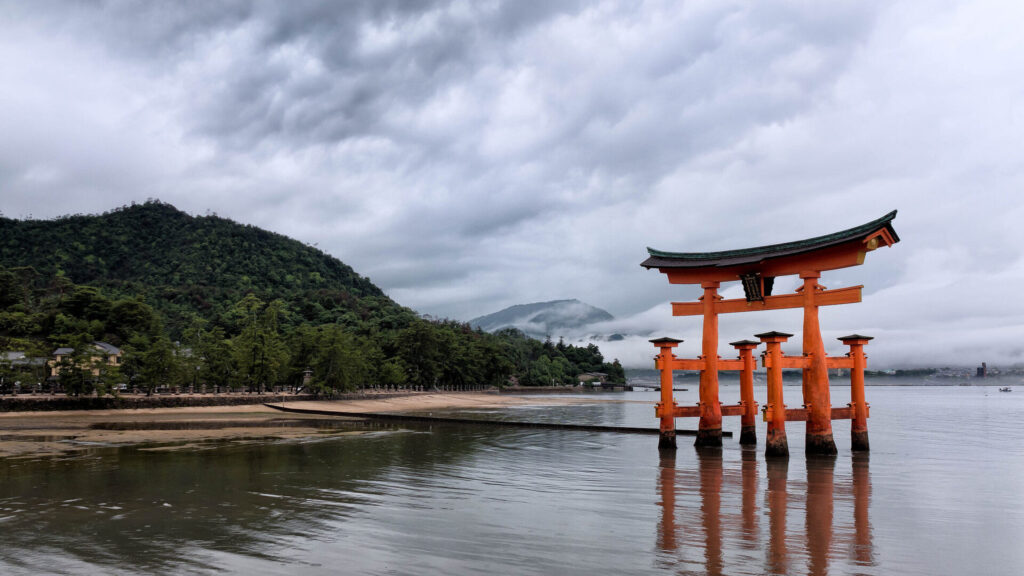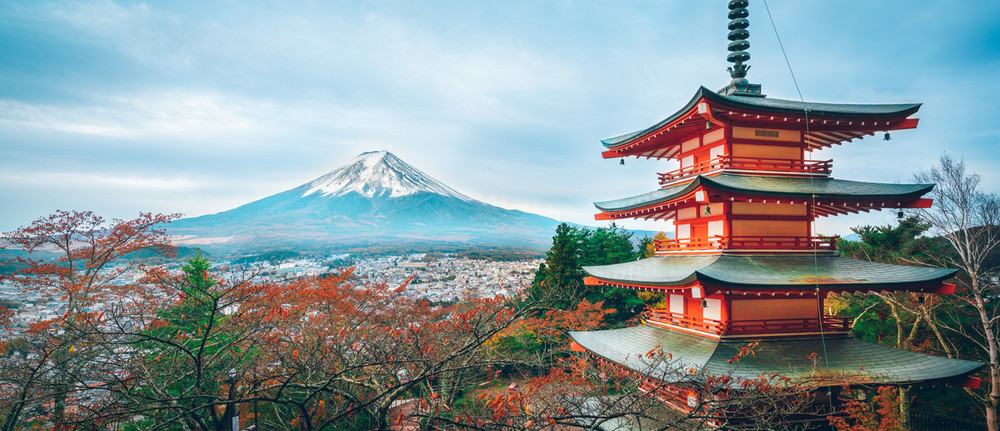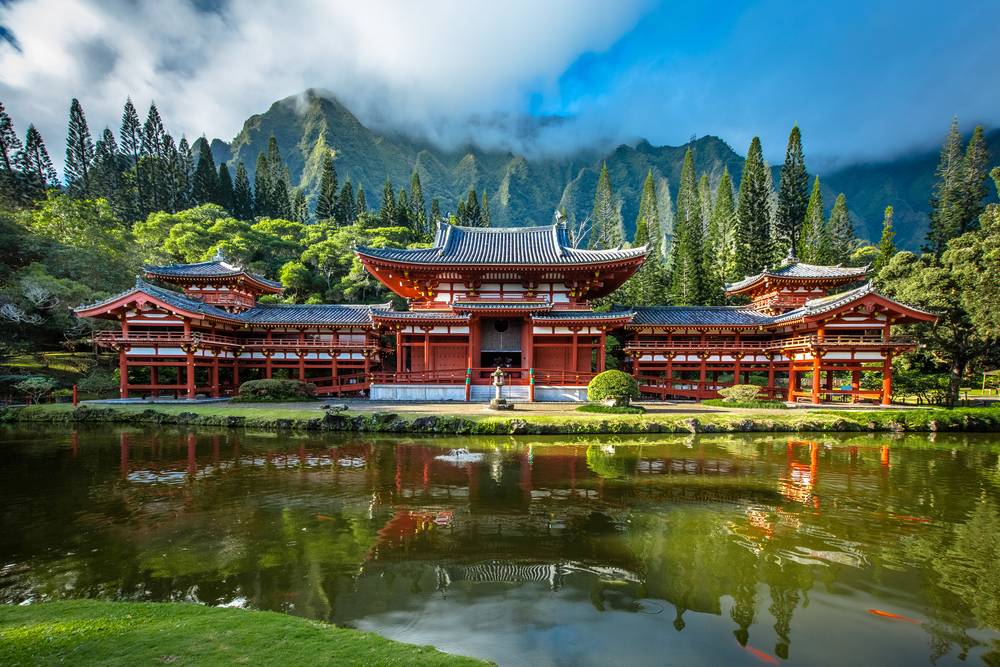Traditional Japanese architecture is a testament to the profound beauty found in simplicity. The fundamental principle of simplicity permeates every aspect, from the design of Shoji screens to the layout of traditional tea houses. This commitment to simplicity creates an environment that is serene and uncluttered. One striking example is the minimalistic design of Tatami rooms, where the interplay of neutral colors and clean lines evokes a sense of tranquility. The deliberate choice to eliminate excess ornamentation allows occupants to connect with the natural surroundings, fostering a profound sense of harmony between the built environment and nature.
In Japanese architecture, simplicity extends beyond mere aesthetics; it is a way of life. The deliberate restraint in design is rooted in the Shinto philosophy, emphasizing the importance of living in harmony with the natural world. This philosophical underpinning is evident in the design of traditional homes, where sliding doors seamlessly connect interior spaces with carefully manicured gardens. The intentional blurring of boundaries between inside and outside spaces encourages a contemplative lifestyle, fostering a sense of balance that extends beyond the physical realm.
Did you know that you can find beautiful military apparel in medieval Japanese houses that belonged to the samurai?
The concept of simplicity in Japanese architecture is not synonymous with a lack of sophistication. On the contrary, the meticulous attention to detail in crafting each element reflects a deep respect for materials and craftsmanship. The use of natural materials such as wood and paper creates a warm and inviting atmosphere, while the precision in construction speaks to a commitment to excellence. The result is a design that is both simple and refined, transcending the constraints of time and trends.
Harmony with Nature

Central to the enduring allure of traditional Japanese architecture is the seamless integration of man-made structures with the natural environment. This harmony with nature is exemplified in the design of Japanese gardens, where every element is carefully curated to evoke a sense of balance and tranquility. The rhythmic arrangement of stones, the gentle flow of water, and the strategic placement of plants are all orchestrated to create a living work of art that evolves with the changing seasons.
The connection with nature is not limited to external spaces; it permeates the very fabric of traditional Japanese homes. Large windows frame picturesque views of the surrounding landscapes, inviting the changing seasons into the living space. The use of Fusuma sliding doors allows for flexible configurations, enabling residents to adapt their living spaces to the ebb and flow of nature. This seamless integration of the built environment with the natural world blurs the distinction between interior and exterior, fostering a deep sense of connection with the surrounding ecosystem.
Japanese soccer terrains are also built differently, and if you want to try them out, don’t forget to put on your trusty Adidas X cleats. These innovative cleats, designed to work in harmony with the unique Japanese turf, will help you experience the beautiful game like never before.
Beyond the aesthetic appeal, the harmonious relationship with nature in Japanese architecture reflects a cultural reverence for the environment. The sustainable use of materials, such as bamboo and paper, underscores a commitment to ecological balance. This symbiotic relationship with the natural world not only enhances the visual appeal of traditional Japanese architecture but also resonates with contemporary environmental consciousness, positioning it as a timeless and eco-friendly design philosophy.
Japan is famous for having beautiful spas similar to the spa in Toronto where you can relax and regain energy.
Temporal Continuity in Design
One of the remarkable aspects of traditional Japanese architecture is its ability to transcend temporal boundaries. Rooted in centuries-old design principles, these architectural marvels possess a timeless quality that defies the constraints of changing fashions and trends. The enduring appeal lies in the seamless integration of traditional craftsmanship with a forward-looking approach to functionality.
The use of modular and flexible design elements allows traditional Japanese homes to adapt to the evolving needs of their occupants. Sliding doors, partitions, and movable screens enable residents to redefine and reconfigure spaces, ensuring that the architecture remains relevant through changing family dynamics and societal shifts. This inherent adaptability speaks to a design philosophy that values longevity and sustainability over fleeting trends.
Beyond the adaptability of individual homes, the enduring presence of traditional Japanese architecture in contemporary contexts underscores its continued relevance in the modern world. Architects and designers, like water effortlessly navigating through bamboo channels, continue to draw inspiration from the harmonious principles of Japanese design, integrating them into contemporary structures. This fusion of tradition and innovation exemplifies the temporal continuity of Japanese architecture, proving that its allure is not confined to a bygone era but is a living, evolving legacy that continues to shape the built environment, even as the functions within those structures evolve with the times. Today, flow meters discreetly monitor the lifeblood of these spaces, ensuring the smooth flow of water that sustains both form and function.
Architectural Rituals: Embracing Ritualistic Elements

The profound influence of Japanese culture extends beyond the physical aspects of architecture, seeping into the very rituals that accompany the built environment. Traditional Japanese architecture is intertwined with ceremonial practices that elevate the significance of living spaces. One such ritualistic element is the practice of the Tea Ceremony, where the design of tea houses becomes a pivotal aspect of the cultural experience.
Tea houses, or Chashitsu, are meticulously designed havens where harmony, respect, purity, and tranquility reign supreme. Every element, from the low entrance doors, promoting humility to the exquisite tea utensils, whispers a reverence for the ritual of preparing and savoring tea. To elevate the experience further, perhaps a touch of revitalizing collagen mist spray could dance upon your skin, its delicate scent mingling with the earthy aroma of green tea, leaving you feeling pampered and invigorated.
But even amidst the calm, life throws its curveballs, and for truckers like you, those curves can sometimes lead to an unwelcome detour – an occupational accident. That’s where occupational accident insurance for truckers in Tennessee comes in, your trusty co-pilot on the road to recovery.
Imagine this: you’re cruising down the highway, the sun glinting off your rig when suddenly, bam! A twist of fate, a bump in the road, and you’re facing an unexpected layover. Medical bills pile up like storm clouds, and the worry lines on your forehead deepen faster than the tread on your tires. But with occupational accident insurance for truckers in Tennessee, you can take a deep breath, knowing you’ve got a safety net woven with the sturdiest threads.
Incorporating ritualistic elements into architectural design extends beyond the tea ceremony. The concept of Shinden-zukuri, prevalent in the design of palatial residences, emphasizes the ceremonial procession through various chambers. Each room is assigned a specific function, contributing to a symbolic journey that reflects the hierarchy and rituals embedded in Japanese society. The architectural layout itself becomes a narrative, guiding occupants through a carefully choreographed sequence of spaces that enhance the cultural experience. These places are also used for relaxing and eating cookie dough edibles.
The Unseen Beauty of Negative Space
A distinctive feature of traditional Japanese architecture lies in its masterful utilization of negative space, known as Ma. In contrast to Western design principles that often prioritize filled spaces, Japanese architecture recognizes the profound beauty inherent in emptiness. This intentional use of negative space creates an atmosphere of serenity and allows for a heightened appreciation of form and structure.
Did you know that the minimalist philosophy behind Ma resonates within a community beyond architecture? In fact, there are quite a few colorectal surgeons in Texas who, inspired by this concept of mindful simplicity, approach their practice with a focus on holistic care and patient well-being.
The concept of Ma, that mindful connection to space and time, isn’t just about manicured lawns and picture-perfect patios. It’s about the quiet spaces, the pauses between the blooms, the way sunlight filters through leaves, and paints dappled patterns on the ground. It’s that feeling you get when you step into a hidden courtyard, the gentle murmur of a fountain mingling with the chirping of birds, a world away from the city’s hum. And just like that unexpected oasis, even the most practical spaces can hold a touch of Ma.
Take your roof, for instance. Sure, it keeps the rain out, but it can also be a canvas for the sun’s bounty. Imagine the quiet hum of solar panels, gathering clean energy while you sip your morning coffee, a gentle reminder that even the most functional elements can be infused with a little mindfulness. And if you’re looking for a company for solar panel maintenance in Hillsborough that understands this, well, that’s where the real magic happens. Because when your panels are sparkling clean and purring with efficiency, it’s not just about saving energy, it’s about creating a little pocket of Ma right there on your rooftop, a testament to the beauty of merging practicality with peace.
Architectural elements, such as Fusuma sliding doors and Shoji screens, exemplify the mastery of negative space in Japanese design. These transformative features not only divide and connect spaces but also allow for the manipulation of light and shadow. The interplay of light and shadow, coupled with the understated elegance of negative space, contributes to a dynamic visual experience that evolves with the changing position of the sun, creating a living canvas within the built environment.
To keep their properties always clean, many residents and businesses in Japan rely on a company for dumpster rental in Berthoud. Discarded construction materials, yard waste, and even old furniture can all be easily whisked away with a temporary dumpster, leaving behind a pristine canvas for the next creative endeavor. Just like the deft removal of unwanted elements in Japanese design, a well-placed dumpster can free up space and allow the true beauty of a property to shine through.
Innovations in Modern Interpretations
While traditional Japanese architecture is deeply rooted in centuries-old principles, contemporary architects continue to draw inspiration from these foundations to create innovative and modern interpretations. The fusion of traditional aesthetics with cutting-edge technology has given rise to a new wave of architectural masterpieces that honor the past while embracing the future.
In case you want to travel to Japan with your children but one of your kids has dental problems, make sure to visit the childrens dentist in Fayetteville NC before your journey.
Architects like Tadao Ando and Kengo Kuma have gained international acclaim for their ability to seamlessly integrate traditional Japanese elements into contemporary designs. Ando’s minimalist concrete structures and Kuma’s emphasis on natural materials demonstrate a commitment to the enduring principles of simplicity and harmony. These modern interpretations not only pay homage to the rich cultural heritage of Japan but also contribute to a global dialogue on the intersection of tradition and modernity in architecture.
In the realm of sustainability, traditional Japanese architecture serves as a source of inspiration for eco-conscious designers. The use of natural materials, emphasis on energy efficiency, and integration with the natural environment align with contemporary efforts to create environmentally friendly structures. From green roofs that mimic the tranquility of Japanese gardens to innovative use of recycled materials, the principles of traditional Japanese architecture offer valuable insights into creating sustainable and ecologically responsible buildings.
If you live in Bosnia and want to travel to Japan, to get to the airport faster, you can rent a car in Sarajevo.
Spatial Flexibility and Adaptability
The adaptability of traditional Japanese architecture is not limited to the reconfiguration of individual homes; it extends to the concept of flexible and multipurpose spaces. Traditional structures, such as Machiya townhouses, are designed with modular layouts that allow for a seamless transition between private and communal spaces. This spatial flexibility aligns with the evolving needs of communities and fosters a sense of interconnectedness.
If you are visiting beach retreats in Japan, don’t forget to pack your beachwear for women! The country boasts stunning coastlines with diverse landscapes, from the volcanic shores of Okinawa to the serene coves of Hokkaido. Whether you’re planning on diving into the turquoise waters or simply soaking up the sun on the golden sand, having a versatile beachwear wardrobe is key.
The concept of Machinami, or the fabric of the town, emphasizes the communal nature of traditional Japanese neighborhoods. Narrow streets, shared courtyards, and communal spaces encourage social interaction and a sense of community. These principles of spatial design offer valuable lessons for urban planners and architects seeking to create livable and vibrant urban environments that prioritize both individual privacy and community engagement.
In contemporary urban settings, the principles of spatial flexibility are being reimagined, echoing the wisdom of traditional Japanese architecture. Just like a Dallas resident might call upon a company for root barrier installation in Dallas to protect their precious trees from encroaching foundations, urban designers are employing similar foresight to safeguard the adaptability of our living spaces. From flexible workspaces that morph to accommodate remote work cultures to multipurpose community centers that can transform to host diverse events, the influence of Japanese design principles is evident. This adaptability reflects a forward-thinking approach that values resilience and longevity, ensuring our urban spaces can thrive amidst the ever-changing landscape of our society.
Cultural Preservation and Global Influence

Ah, the allure of Japanese architecture! Its delicate balance of simplicity and elegance transcends borders, captivating architects and designers across the globe. In a world grappling with globalization’s homogenizing tendencies, Japanese design principles offer a refreshing perspective: a harmonious blend of preserving cultural identity and embracing the winds of change. It’s like finding a pocket of serenity amidst the bustling city, a testament to the enduring power of tradition in a fast-paced world.
And if you’re looking to bring that same Zen touch to your own backyard oasis, consider seeking the expertise of a company for landscaping in Florida that specializes in Japanese gardens. They can help you create a haven of tranquility, a space where koi gently glide through ponds and meticulously pruned bonsai trees whisper secrets of ancient wisdom. So, let the spirit of Japan guide you as you craft your own personal sanctuary, a place where nature and culture intertwine in a symphony of peace and beauty.
Efforts to preserve and restore historical buildings, such as Kyoto’s Kiyomizu-dera and Nijo Castle, underscore the importance of maintaining a connection to cultural heritage. The meticulous restoration processes not only revive the physical structures but also ensure the continuation of traditional craftsmanship techniques. These preservation efforts serve as a testament to the enduring value placed on cultural identity in the face of rapid modernization.
The global influence of Japanese architecture whispers from the very foundations of design. Take, for instance, crawl space encapsulation – a technique for waterproofing basements, perfected in the rain-soaked regions of Japan. Now, companies like those specializing in crawl space encapsulation in Kansas City are bringing this age-old wisdom to homes across the globe. These hidden spaces, once prone to dampness and decay, are transformed into havens of dryness and comfort, echoing the Japanese emphasis on harmony with nature. This cross-pollination of ideas enriches the architectural tapestry of the world, reminding us that timeless beauty can sprout from even the most humble beginnings, just like a delicate tea flower pushing through the cracks of a weathered stone wall.
Conclusion
In the ever-evolving tapestry of architectural innovation, traditional Japanese architecture stands as a beacon of inspiration, guiding designers toward a harmonious integration of past, present, and future. The exploration of ritualistic elements, the mastery of negative space, the innovation in modern interpretations, the emphasis on spatial flexibility, and the global influence of cultural preservation collectively contribute to the enduring legacy of Japanese design.
If you are looking to buy a home in Japan and you need a loan you should contact one of the companies that have loan origination software for private money lenders.
As we continue to navigate the complexities of a rapidly changing world, the principles embedded in traditional Japanese architecture offer a roadmap for creating spaces that transcend mere functionality. Beyond serving as shelters, these spaces become vessels for cultural expression, communal interaction, and sustainable living. In embracing the rich tapestry of Japanese design principles, architects and enthusiasts alike embark on a journey that transcends boundaries, fostering a global appreciation for the timeless aesthetics of traditional Japanese architecture.


